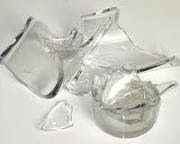Scattering of light
When light rays fall on tiny dust particles present in the atmosphere they completely absorb the light energy and disperse the light in all directions. The velocity of light does not change during this process.Also refer Lord Rayleigh scattering
Scattering is a general physical process where some forms of radiation, such as light, sound, or moving particles, are forced to deviate from a straight trajectory by one or more localized non-uniformities in the medium through which they pass. In conventional use, this also includes deviation of reflected radiation from the angle predicted by the law of reflection. Reflections that undergo scattering are often called diffuse reflections and unscattered reflections are called specular (mirror-like) reflections.
Wonders of Scattering of light
1. The sky appears blue to us due to scattering of light.
2. The sky appears black to astronauts as there is no scattering of light.
4. Glass pieces appear as silver when seen from a far place.






































